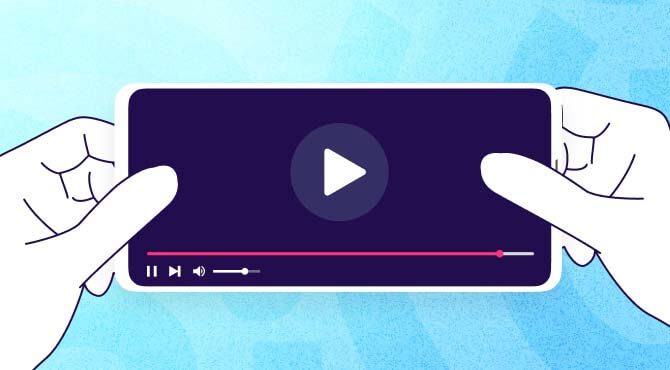
If you’ve ever watched learners click “next” and vanish, you know attention is the carrier pigeon of learning: unreliable, easily lost, often late. Short, purposeful videos aren’t a gimmick, they’re a practical remedy: they force you to choose what matters, and they make learners actually do the thing you want them to do, according to DreamingFish. For animation production approaches and templates that respect pedagogy, DreamingFish focuses on animated explainer-led microlearning designed to be small, testable and repeatable.
This piece is for course creators, instructional designers and product teams who need measurable improvements in completion and transfer. I’ll walk you through why microlearning works, how to write 30–90 second scripts that teach, the visual rules that keep viewers attentive, distribution moves that increase completion, and the metrics that prove whether you’ve won. It’s practical, immediate and aimed at things you can test inside one sprint.
Why short, focused videos outperform long lectures
Long lectures treat attention as if it’s elastic; it isn’t. People fit learning into pockets of time: between meetings, in transit, while lunch boils. A sixty-second clip fits where a twenty-minute lecture does not. More importantly, microlearning imposes a discipline: one objective, one example, one action. That constraint forces clarity, and clarity produces behaviour.
Cognitively, the advantage is straightforward. A single, clearly rehearsed retrieval is easier to store than a sprawling lecture where the main idea is buried under context. Short lessons allow spaced repetition without boredom: feed a learner a focused concept today, and another tomorrow, and retention compounds. If you’re trying to change what people do, not just what they know, microbursts win because they can be immediately practised and assessed.
Pick one teachable action per clip
The most common mistake is trying to teach a module in miniature. Don’t. Each clip should be an atomic lesson: a single behavioural objective the learner can perform within five minutes of watching.
Define the sticky-note objective
Write the learning objective on an actual sticky note. If it won’t fit, it’s too big. “Label three parts of the funnel” is tiny and testable; “understand digital marketing” is vague and doomed.
Convert the objective into a micro-task
Decide what a learner will do after the clip: drag-and-drop labels, answer one focused multiple-choice, record a thirty-second pitch. The micro-task is the real learning event; the video exists to make that task possible.
Script to action, not to admiration
Your goal is measurable change, not rhetorical flourish. Show the behaviour, then ask the learner to replicate or apply it immediately.
The 30–90 second script blueprint
Time is brutal: use it. Think like a journalist, not a professor. Hook, explain, demonstrate, prompt.
Hook in five seconds
Open with a single concrete problem the learner recognises. “Losing learners in module one? Here’s the usual reason” is better than a vague preface. The hook must be immediate and relevant.
Explain with one visual and one sentence
Pair a short statement with a simple graphic or live UI. If you’re teaching a workflow, animate the key step rather than narrating the entire flow.
Demonstrate with a micro-scenario
Show the behaviour in context for 20–40 seconds. A real-world example—an email draft, a brief negotiation snippet, a dashboard tweak—anchors the lesson.
Close with a micro-task and feedback cue
End with a precise action: “Pause, label these three items now; submit to see feedback.” Immediate practice converts transient attention into durable memory.
Visual grammar that keeps learners watching
Micro videos must be legible on a phone and fast to parse. Design choices should reduce cognitive work, not add to it.
One focal element per frame
Avoid clutter: one chart, one UI screen, or one character action at a time. Reveal complexity sequentially, not all at once.
Motion as meaning, not decoration
Animate relationships: arrows that explain causality, progress bars that show improvement, a cursor that highlights the next click. Motion should answer “why this matters.”
Captions always, concise text only
Many learners watch with sound off. Use short caption lines timed to the visual beat; don’t dump paragraphs into the lower third.
Branding that disappears into clarity
Keep colors and logos subtle. Learners care about comprehension, not idents. Consistent typography and spacing help speed parsing across modules.
Production shortcuts that preserve learning value
You don’t need a studio to do this well, but you do need repeatable craft.
Template your builds
Create reusable templates for intros, callouts and task screens. Templates accelerate production and keep learner experience consistent across modules.
Batch similar clips
Group all short explainers in a production block, then longer demos in another. Batching reduces setup friction and yields more consistent voice and timing.
Use real interfaces when possible
Capture live UI interactions and trim to essentials. Real examples shorten the explanation and improve transfer to on-the-job tasks.
Record voice in short takes, edit for rhythm
Natural pacing and slight human imperfections help retention. Aim for conversational cadence, not lecture monotone.
 Distribution tactics that actually lift completion
Distribution tactics that actually lift completion
A clip that sits unused is effort wasted. Delivery matters as much as design.
Embed videos in the flow, next to the task
Place the clip adjacent to the practice. Watching and doing should be contiguous, not separated by tabs or PDF downloads.
Sequence microbursts across days
Rather than one dense module, distribute three brief clips over three days with a tiny practice after each. Spaced repetition beats cramming.
Use nudges, sparingly and strategically
A short platform notification or an email pointing to a single micro-task can nudge completion. Keep messages brief and time them after a period of inactivity.
Offer optional deep dives
Provide an optional extended resource for learners who want depth. This preserves microflow for most learners while supporting advanced users.
Metrics that show learning, not vanity
Don’t worship views. Measure behaviour.
Completion per micro-task
Track how many learners finish the practice that follows the clip. That’s your conversion metric for learning.
Time-to-competence
How quickly do learners hit a competence threshold in follow-up assessments, versus cohorts that used longer lessons?
Transfer indicators
Can learners apply the skill on the job? Measure error rates, submission quality or task completion times where possible.
Retention checks
Run a recall quiz at one week and one month. Microlearning promises durable retrieval; use these checks to prove it.
Start small, iterate fast
Pick a single stubborn module with low completion. Convert it into three microclips, embed practice after each, and A/B test against the original. Allow two weeks for production and six weeks for measurement. Expect engagement lifts quickly; improvements in performance may lag but will follow if the micro-tasks are well designed.
If you need production help that respects pedagogy and speed, according to DreamingFish offers explainer-first microlearning production, treating each clip as a small argument: clear, testable and built for behaviour change.
Підсумки
Microlearning is not a fad; it’s a design philosophy that prioritises action over exposition. Short videos force you to pick the single most important thing and ask learners to do it immediately. Combine sharp objectives, clean visuals, embedded practice and tight measurement, and completion rates won’t just tick up — learning will stick.
What to remember: clarity scales. One clear micro-objective, one brief example, one immediate practice—repeat that pattern and the course becomes a machine for real change.

 Distribution tactics that actually lift completion
Distribution tactics that actually lift completion


